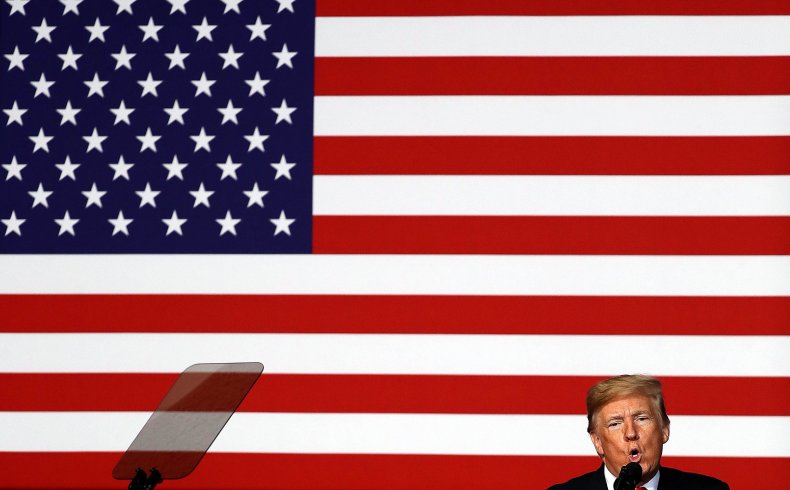U.S. Missile Deployment: A Source Of Growing Tension With China

Table of Contents
The Strategic Rationale Behind U.S. Missile Deployments
The United States' military strategy in the Indo-Pacific region is fundamentally shaped by its assessment of the growing military might and assertive actions of China. The perceived threats are multifaceted: China's rapid military modernization, its increasingly forceful claims in the South China Sea, and its implicit threats towards Taiwan are all key drivers of U.S. policy. To counter these perceived threats, the U.S. employs a strategy of deterrence, heavily reliant on missile defense systems. The strategic rationale centers on projecting power, reassuring allies, and potentially mitigating the impact of a future conflict.
This approach manifests in several key ways:
- Increased presence of U.S. Aegis Ashore systems: These land-based missile defense systems enhance the U.S.'s capacity to intercept ballistic missiles.
- Deployment of THAAD (Terminal High Altitude Area Defense) systems: THAAD's deployment further bolsters missile defense capabilities in the region.
- Modernization of existing missile defense capabilities: Continuous upgrades to existing systems ensure that they remain effective against evolving threats.
- Potential impact on regional power balance: The deployment of these systems significantly alters the regional power balance, prompting both reassurance among allies and concern amongst adversaries.
China's Response and the Escalation of Tensions
China views U.S. missile deployments as a direct threat to its national security and strategic interests. This perception fuels a cycle of escalating tensions. Beijing's response has been multifaceted, encompassing diplomatic protests, increasingly assertive military exercises, and a ratcheting up of its own military capabilities. The rhetoric surrounding these deployments frequently emphasizes the destabilizing nature of the U.S.'s actions.
China's countermeasures include:
- Increased Chinese military activity near Taiwan: More frequent military exercises around Taiwan demonstrate China's determination to assert control.
- Development and deployment of advanced anti-access/area-denial (A2/AD) systems: These systems aim to limit the U.S.'s ability to operate effectively in the region.
- Expansion of China's naval and air forces: China's military modernization continues apace, enhancing its capacity to project power.
- Increased cyber warfare capabilities: Cyberattacks are increasingly used as a tool to undermine opponents and gather intelligence.
The Geopolitical Implications and Regional Instability
U.S. missile deployments have profound implications for regional stability, particularly in the volatile South China Sea and Taiwan Strait. The increased military presence and the potential for miscalculation significantly raise the risk of broader conflict. This heightened tension impacts not only the U.S. and China but also other regional actors.
The ripple effects include:
- Impact on relationships with U.S. allies in the region (Japan, South Korea, Philippines): These alliances are strengthened, but also potentially drawn into greater risk.
- Potential for increased tensions with other claimant states in the South China Sea: The deployment adds further complexity to existing disputes.
- The risk of unintended consequences and escalation: A minor incident could easily escalate into a major conflict.
- The role of international organizations in managing the crisis: International bodies are struggling to manage the rising tensions and prevent further escalation.
Finding Pathways to De-escalation: Diplomacy and Dialogue
De-escalation requires a renewed commitment to diplomacy and dialogue. Open communication channels, transparency regarding military activities, and confidence-building measures are essential. International frameworks and arms control agreements could play a vital role in mitigating the risks. This necessitates a strategic shift towards reducing mistrust and fostering a more stable regional security environment.
Key steps include:
- Importance of establishing clear communication channels: Direct lines of communication between military leaders are crucial to prevent misunderstandings.
- Potential for confidence-building measures: Joint military exercises and transparency regarding weapons systems can help reduce mistrust.
- The role of international organizations in mediating disputes: Organizations like ASEAN can play a crucial role in fostering dialogue and conflict resolution.
- The need for arms control agreements to limit the risk of escalation: Agreements to limit the deployment of certain weapons systems could help reduce tensions.
Conclusion
U.S. missile deployment in the Indo-Pacific significantly influences U.S.-China relations and regional stability. The strategic rationale behind these deployments is rooted in the perceived threat from China's growing military capabilities and assertive actions. However, China's response has led to a dangerous cycle of escalation, threatening peace and stability in the region. Finding pathways to de-escalation requires a renewed focus on diplomacy, dialogue, and transparent communication. Understanding the complexities of U.S. missile deployment and its effect on U.S.-China relations is crucial. Stay informed about the latest developments and advocate for peaceful resolutions to this critical geopolitical challenge. Contact your representatives and urge them to prioritize diplomatic solutions to prevent further escalation of tensions surrounding U.S. missile deployment.

Featured Posts
-
 Analysis Ai Companies And The Trump Bill A Pyrrhic Victory
May 20, 2025
Analysis Ai Companies And The Trump Bill A Pyrrhic Victory
May 20, 2025 -
 Tadic Fenerbahce Ye Geliyor Kuluep Tarihinin En Bueyuek Transferlerinden Biri
May 20, 2025
Tadic Fenerbahce Ye Geliyor Kuluep Tarihinin En Bueyuek Transferlerinden Biri
May 20, 2025 -
 Ecowas Economic Affairs Department Sets Strategic Priorities At Niger Retreat
May 20, 2025
Ecowas Economic Affairs Department Sets Strategic Priorities At Niger Retreat
May 20, 2025 -
 Glen Kamara Ja Teemu Pukki Sivussa Jacob Friisin Avauskokoonpano
May 20, 2025
Glen Kamara Ja Teemu Pukki Sivussa Jacob Friisin Avauskokoonpano
May 20, 2025 -
 Synaylia Sto Dimotiko Odeio Rodoy Oi Kathigites Stin Dimokratiki
May 20, 2025
Synaylia Sto Dimotiko Odeio Rodoy Oi Kathigites Stin Dimokratiki
May 20, 2025
